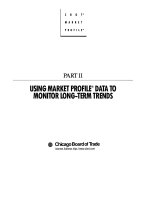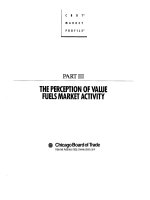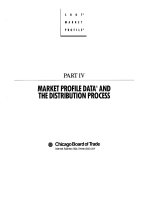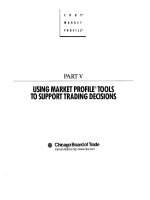The forex trading course a self study guide to becoming a successful currency trader
Bạn đang xem bản rút gọn của tài liệu. Xem và tải ngay bản đầy đủ của tài liệu tại đây (5.19 MB, 236 trang )
JWPR051-Cofnas (JWBK051-Cofnas)
August 22, 2007
7:45
Char Count=
The Forex
Trading Course
Ge
t
Al
l.c
om
A Self-Study Guide to Becoming
A Successful Currency Trader
w
.T
he
ABE COFNAS
w
w
FM
August 22, 2007
7:45
Char Count=
w
.T
he
Ge
t
Al
l.c
om
JWPR051-Cofnas (JWBK051-Cofnas)
w
w
FM
JWPR051-Cofnas (JWBK051-Cofnas)
August 22, 2007
7:45
Char Count=
w
.T
he
Ge
t
Al
l.c
om
The Forex
Trading Course
w
w
FM
JWPR051-Cofnas (JWBK051-Cofnas)
August 22, 2007
7:45
Char Count=
w
.T
he
Ge
t
Al
l.c
om
Founded in 1807, John Wiley & Sons is the oldest independent publishing company in the
United States. With offices in North America, Europe, Australia, and Asia, Wiley is globally committed to developing and marketing print and electronic products and services
for our customers’ professional and personal knowledge and understanding.
The Wiley Trading series features books by traders who have survived the market’s
ever-changing temperament and have prospered—some by reinventing systems, others
by getting back to basics. Whether a novice trader, professional, or somewhere in between, these books will provide the advice and strategies needed to prosper today and
well into the future.
For a list of available titles, visit our Web site at www.WileyFinance.com.
w
w
FM
JWPR051-Cofnas (JWBK051-Cofnas)
August 22, 2007
7:45
Char Count=
The Forex
Trading Course
Ge
t
Al
l.c
om
A Self-Study Guide to Becoming
A Successful Currency Trader
w
.T
he
ABE COFNAS
w
w
FM
JWPR051-Cofnas (JWBK051-Cofnas)
Copyright
C
August 22, 2007
7:45
Char Count=
2008 by Abe Cofnas. All rights reserved.
Published by John Wiley & Sons, Inc., Hoboken, New Jersey.
Published simultaneously in Canada.
Wiley Bicentennial Logo: Richard J. Pacifico
Al
l.c
om
No part of this publication may be reproduced, stored in a retrieval system, or transmitted in any form or by
any means, electronic, mechanical, photocopying, recording, scanning, or otherwise, except as permitted under
Section 107 or 108 of the 1976 United States Copyright Act, without either the prior written permission of the
Publisher, or authorization through payment of the appropriate per-copy fee to the Copyright Clearance Center,
Inc., 222 Rosewood Drive, Danvers, MA 01923, (978) 750-8400, fax (978) 646-8600, or on the web at
www.copyright.com. Requests to the Publisher for permission should be addressed to the Permissions
Department, John Wiley & Sons, Inc., 111 River Street, Hoboken, NJ 07030, (201) 748-6011, fax (201) 748-6008,
or online at www.wiley.com/go/permissions.
Ge
t
Limit of Liability/Disclaimer of Warranty: While the publisher and author have used their best efforts in
preparing this book, they make no representations or warranties with respect to the accuracy or completeness
of the contents of this book and specifically disclaim any implied warranties of merchantability or fitness for a
particular purpose. No warranty may be created or extended by sales representatives or written sales materials.
The advice and strategies contained herein may not be suitable for your situation. You should consult with a
professional where appropriate. Neither the publisher nor author shall be liable for any loss of profit or any
other commercial damages, including but not limited to special, incidental, consequential, or other damages.
For general information on our other products and services or for technical support, please contact our
Customer Care Department within the United States at (800) 762-2974, outside the United States at (317)
572-3993 or fax (317) 572-4002.
he
Wiley also publishes its books in a variety of electronic formats. Some content that appears in print may not be
available in electronic books. For more information about Wiley products, visit our web site at www.wiley.com.
.T
Figures 1.1, 3.1, and 5.5 are reprinted with permission of CQG, Inc.
C
2006 All rights reserved worldwide.
w
Library of Congress Cataloging-in-Publication Data:
Cofnas, Abe, 1950–
The Forex trading course : a self-study guide to becoming a successful
currency trader / Abe Cofnas.
p. cm. — (Wiley trading series)
Includes index.
ISBN 978-0-470-13764-2 (pbk.)
1. Foreign exchange futures. 2. Foreign exchange market. 3. Speculation.
I. Title.
HG3853.C64 2008
2007019251
332.4 5–dc22
w
w
FM
Printed in the United States of America
10 9 8 7 6 5 4 3 2 1
JWPR051-Cofnas (JWBK051-Cofnas)
August 22, 2007
7:45
Char Count=
w
.T
he
Ge
t
Al
l.c
om
This book is dedicated to my students throughout the world, who have the
courage to take on the challenge of forex trading. I have learned much from
them about trading and about the human condition.
w
w
FM
August 22, 2007
7:45
Char Count=
w
.T
he
Ge
t
Al
l.c
om
JWPR051-Cofnas (JWBK051-Cofnas)
w
w
FM
JWPR051-Cofnas (JWBK051-Cofnas)
August 22, 2007
7:45
Char Count=
Foreword
Preface
Acknowledgments
Ge
t
About the Author
Al
l.c
om
Contents
ix
xi
xiii
xv
What Drives the Forex Market?
1
CHAPTER 1
The Fundamentals of Forex
3
CHAPTER 2
The Role of Inflation
15
CHAPTER 3
Exploiting Information About Economic Growth
19
CHAPTER 4
The China Factor
27
CHAPTER 5
The Commodities Connection
CHAPTER 6
w
.T
he
PART I
w
w
FM
33
How Business Confidence and Consumer Sentiment
Affect the Market
41
Fundamental Personalities of Currencies
43
CHAPTER 8
The Personality and Performance of the U.S. Dollar
69
CHAPTER 9
Conducting Your Own Fundamental Analysis
75
PART II
Timing the Trade with Technical Analysis
79
CHAPTER 7
CHAPTER 10 Mapping Price Action
81
CHAPTER 11 Finding Significant Support and Resistance
91
vii
JWPR051-Cofnas (JWBK051-Cofnas)
August 22, 2007
7:45
Char Count=
viii
CONTENTS
CHAPTER 12 Volatility in Forex and Its Dimensions
105
CHAPTER 13 Chart Formations and Price Patterns You
Should Know
131
CHAPTER 14 Trading Styles and Setups
143
CHAPTER 15 Alternative Setups and Trading Strategies
161
PART III
171
Putting It Together
173
CHAPTER 17 Strategies and Challenges for Different
Account Sizes
177
CHAPTER 18 The Path to Success in Forex Trading
189
CHAPTER 19 Test Your Forex IQ
195
Selected Futures Columns
Ge
t
APPENDIX
Al
l.c
om
CHAPTER 16 The Right Way To Use Simulation Accounts
w
.T
he
Index
w
w
FM
201
207
JWPR051-Cofnas (JWBK051-Cofnas)
August 22, 2007
7:45
Char Count=
Al
l.c
om
Foreword
ver 30 years ago, Abe Cofnas was a student of mine at the University of California
at Berkeley. At the time, I am certain to have delivered a long-held admonition:
95 percent of what you read in economics will be either wrong or irrelevant. I
am pleased to report that The Forex Trading Course falls into the 5 percent residual
category of materials that are worth reading.
In addition to satisfying those with a healthy obsession to work on improving their
professional skills, The Forex Trading Course will force readers to think outside the box
and to develop an appetite for the pursuit of knowledge about trading. This, of course,
is the most important aspect of the book and reminds me of an observation made by Sir
Hugh Rigby, surgeon to King George V. Sir Hugh was once asked, “What makes a great
surgeon?” He replied, “There isn’t much to choose between surgeons in manual dexterity.
What distinguishes a great surgeon is who knows more than other surgeons.” The same
can be said for traders.
In the interest of putting the reader a leg up, an understanding of the structure
of exchange-rate regimes is essential. There are three distinct types of exchange-rate
regimes—floating, fixed, and pegged—each with different characteristics and different
results.
w
.T
he
Ge
t
O
w
w
FM
Hanke’s FX Trichotomy
Type of
Regime
ExchangeRate Policy
Monetary
Policy
Floating
Fixed
Pegged
No
Yes
Yes
Yes
No
Yes
Source of
Monetary
Base
Domestic
Foreign
Domestic
and Foreign
Conflicts between
Exchange-Rate
Balance-ofand Monetary
Payments
Policy
Crisis
Exchange
Controls
No
No
Yes
No
No
Maybe
No
No
Yes
ix
JWPR051-Cofnas (JWBK051-Cofnas)
August 22, 2007
7:45
Char Count=
x
FOREWORD
w
.T
he
Ge
t
Al
l.c
om
Although floating and fixed rates appear dissimilar, they are members of the same
free-market family. Both operate without exchange controls and are free-market mechanisms for balance-of-payments adjustments. With a floating rate, a central bank sets a
monetary policy but has no exchange-rate policy—the exchange rate is on autopilot. In
consequence, the monetary base is determined domestically by a central bank. With a
fixed rate, there are two possibilities: either a currency board sets the exchange rate but
has no monetary policy—the money supply is on autopilot—or a country is “dollarized”
and uses a foreign currency as its own. In consequence, under a fixed-rate regime, a
country’s monetary base is determined by the balance of payments, moving in a one-toone correspondence with changes in its foreign reserves. With both of these free-market,
exchange-rate mechanisms, there cannot be conflicts between monetary and exchangerate policies, and balance-of-payments crises cannot rear their ugly heads. Indeed, under
floating- and fixed-rate regimes, market forces act to automatically rebalance financial
flows and avert balance-of-payments crises.
Fixed and pegged rates appear to be the same. However, they are fundamentally
different: pegged-rate systems often employ exchange controls and are not free-market
mechanisms for international balance-of-payments adjustments. Pegged rates require a
central bank to manage both the exchange rate and monetary policy. With a pegged rate,
the monetary base contains both domestic and foreign components. Unlike floating and
fixed rates, pegged rates invariably result in conflicts between monetary and exchangerate policies. For example, when capital inflows become “excessive” under a pegged
system, a central bank often attempts to sterilize the ensuing increase in the foreign
component of the monetary base by selling bonds, reducing the domestic component
of the base. And when outflows become “excessive,” a central bank attempts to offset
the decrease in the foreign component of the base by buying bonds, increasing the domestic component of the monetary base. Balance-of-payments crises erupt as a central
bank begins to offset more and more of the reduction in the foreign component of the
monetary base with domestically created base money. When this occurs, it is only a matter of time before currency speculators spot the contradictions between exchange-rate
and monetary policies (as they did in the Asian financial crisis of 1997–1998) and force a
devaluation or the imposition of exchange controls.
w
w
FM
Steve H. Hanke
Professor of Applied Economics
Johns Hopkins University
Baltimore
July 2007
JWPR051-Cofnas (JWBK051-Cofnas)
August 22, 2007
7:45
Char Count=
Al
l.c
om
Preface
s forex’s popularity increases to unprecedented levels, people around the world
are considering its potential. There are many reasons for its popularity. First, we
are truly in an online revolution, powered by the globalization of the Internet.
´
From your desktop—whether at home, an airport, or at an Internet cafe—you
can actually trade any of the world’s currencies. The implications are profound. People can be
liberated from the confines of one’s economy and engage in a new profession—forex
trading. Additionally, globalization of the world’s economies has created great uncertainty regarding individual career paths. Individuals can no longer expect to work for
one employer. Baby Boomers are facing the opportunity and challenge of post-retirement
careers.
In response to forex’s popularity, many new trading firms and training firms have
arisen to supply services to this new group of aspiring forex traders. The result has
been a cacophony of information overload, instant gurus, and instant trading solutions that appeal to those looking for shortcuts to success. These programs essentially confuse people and divert them from a realistic approach to training in forex
trading.
This book is written for the purpose of providing a getting started guide in forex
trading. It, however, is not only for the person new to forex, but for those who have tried
to trade forex but received mixed results through trial and error. It is also for those who
have experience in trading other markets and seek to apply that experience to forex.
They will be able to build upon their experience and gain new insights into how to approach forex. Those who have achieved a level of initial success but seek to optimize
their performance will find training strategies and tactics particularly useful.
The underlying premise of this book is that traders are not born—they evolve. Our
goal is to sharpen the insights and the skills of the reader by providing both fundamental
and technical knowledge that are common to successful traders. An underlying philosophy of this book is that successful forex trading requires a total approach that integrates
fundamentals, technical analysis, and psychology.
w
.T
he
Ge
t
A
w
w
FM
xi
JWPR051-Cofnas (JWBK051-Cofnas)
August 22, 2007
7:45
Char Count=
xii
PREFACE
The book is organized as a self-paced sourcebook. Each chapter topic is in essence
a module of knowledge, which can be read individually or sequentially.
r Part I (Chapters 1–9) focuses on the forces that move prices, also known as funda-
Ge
t
Al
l.c
om
mentals. The topics included in the fundamentals show the reader how to use fundamental knowledge to arrive at trading decisions. The chapters provide insight on
how currency price movements are affected by things like interest rates, interest rate
differentials, trade-weighted indexes, commodities, housing data, China, and more.
r Part II (Chapters 10–15) focus on technical knowledge—how to read and analyze
charts. The reader will build specific knowledge about the components of technical
analysis and how to evaluate price action in terms of classical and advanced tools including: support and resistance, retracement concepts, trend analysis, and volatility
and momentum indicators. Nontraditional charting using renko and three-line break
are featured.
r Part III (Chapters 16–19) provides strategies for testing one’s knowledge and skills
in the real world of trading. The final chapter includes 100 questions that the reader
should be able to answer at that point.
w
.T
he
Learning about trading must be interactive, so throughout the book you will find
“assignments” that test your skills. They are designed to help you assess how well you
understand the material and guide you in finding and using valuable information for scanning currency conditions.
Ultimately, all knowledge needs to be actionable. It is my hope that experience of
trying forex trading is enhanced by this book and that forex trading becomes a journey
which is enjoyable for its enormous challenges and more profitable than it otherwise
would be.
w
w
FM
JWPR051-Cofnas (JWBK051-Cofnas)
August 22, 2007
7:45
Char Count=
Al
l.c
om
Acknowledgments
his book is dedicated to the students I have encountered and had the privilege
of mentoring throughout the years. I applaud them for their courage to pursue
the challenges of forex trading and I have learned much from them about how to
teach forex with improved effectiveness. I must acknowledge the late Professor Aaron
Wildavsky, at the Graduate School of Public Policy, who shaped my thinking skills more
than 30 years ago into the tools of inquiry that allowed this book to emerge.
w
.T
he
Ge
t
T
w
w
FM
xiii
August 22, 2007
7:45
Char Count=
w
.T
he
Ge
t
Al
l.c
om
JWPR051-Cofnas (JWBK051-Cofnas)
w
w
FM
JWPR051-Cofnas (JWBK051-Cofnas)
August 22, 2007
7:45
Char Count=
w
.T
he
Ge
t
Al
l.c
om
About the Author
w
w
FM
be Cofnas has been the forex trading columnist of Futures magazine since 2001
and has been a leader in designing and delivering forex training courses. He has
conducted seminars in the United States, London, and Dubai as well as online
training in all time zones. Mr. Cofnas founded www.learn4x.com in 2001 as the desktop forex trading industry started to provide education and training in this field. He
A
xv
JWPR051-Cofnas (JWBK051-Cofnas)
August 22, 2007
7:45
Char Count=
xvi
ABOUT THE AUTHOR
w
.T
he
Ge
t
Al
l.c
om
recently founded www.currencygames.com, a company providing forex education and
global forex competitions. He has been in the financial service industry as an equity broker, futures, and forex trader since 1990.
Mr. Cofnas holds two master’s degrees, in political science from the Graduate School
of Political Science, University of California, and in public policy from the University of
California, Graduate School of Public Policy. He currently lives in Longwood, Florida,
with his wife, Paula, where he conducts research on artificial intelligence programs using
cellular automata and enjoys digital photography. He has a daughter Paige, 25, and a son
Paul, 22.
w
w
FM
JWPR051-Cofnas (JWBK051-Cofnas)
August 22, 2007
7:45
Char Count=
w
.T
he
Ge
t
Al
l.c
om
The Forex
Trading Course
w
w
FM
August 22, 2007
7:45
Char Count=
w
.T
he
Ge
t
Al
l.c
om
JWPR051-Cofnas (JWBK051-Cofnas)
w
w
FM
JWPR051-Cofnas (JWBK051-Cofnas)
August 10, 2007
18:0
Char Count=
PART I
Ge
t
Al
l.c
om
What Drives the
Forex Market?
art I of this book offers a look at the “big picture” in foreign exchange (forex)
trading, that is, what forces influence currency price movements. These forces are
accepted by economists around the world as responsible for changes in the value
of currencies. The person learning to trade forex or trying to improve his or her trading
will benefit from a gain of knowledge of these fundamentals. In fact, as you will see,
fundamental forces act as leading indicators of currency movement.
U.S. and global interest rates, economic growth, and market sentiment toward the
dollar are the key ingredients that shape trading opportunities. Part I provides basic
knowledge on how these factors impact forex prices and how they can be used in selecting trading opportunities.
w
.T
he
P
w
w
c01
1
August 10, 2007
18:0
Char Count=
w
.T
he
Ge
t
Al
l.c
om
JWPR051-Cofnas (JWBK051-Cofnas)
w
w
c01
JWPR051-Cofnas (JWBK051-Cofnas)
August 10, 2007
18:0
Char Count=
CHAPTER 1
Al
l.c
om
The Fundamentals
of Forex
e begin in this chapter with an exploration of the forces that move the prices:
the fundamentals. The reader will learn why fundamentals are important to foreign exchange (forex) traders as well as what kind of economic activity are
most important in affecting price movements. These include interest rates, interest rate
differentials, economic growth, and sentiment regarding the U.S. dollar.
.T
he
Ge
t
W
w
WHY FUNDAMENTALS ARE IMPORTANT
In many ways, forex trading is similar to playing a game. You have an opponent (the
market). In game of chance the key feature is that everyone faces the same odds
and therefore the same level of information. In these games, no player can change
the odds.
Playing forex, however, is not a game of odds. Participants in forex trading do not
share the same amount of information. In forex, this asymmetry of information results in
advantages and disadvantages to trades. Some players have more information than the
others. In forex, information about fundamental aspects of economies does not arrive
simultaneously to all participants. The real important question is what kind of knowledge
and information can improve trading performance. The search for an edge starts with a
fundamental understanding of the nature of the forex market. Having a foundation of
knowledge in fundamentals is a first step in evolving into a winning trader.
In getting acquainted with the forex market, most people start by looking only at
price charts and price patterns. This is called technical analysis. But the study of what
w
w
c01
3
JWPR051-Cofnas (JWBK051-Cofnas)
August 10, 2007
18:0
4
Char Count=
WHAT DRIVES THE FOREX MARKET?
Al
l.c
om
moves those charts is called fundamental analysis. The goal of Part I is to identify the
components of fundamental analysis in regard to forex and then provide a recipe for
developing your own fundamental analysis of a currency pair.
Why take time to look at forex fundamentals? Why should fundamentals matter if a
trade is done off a short-term time interval such as the 5-minute chart? The short answer
is that one cannot separate the fundamentals from the technical analysis without exposing oneself to great distortions in understanding the forex market. Foreign exchange is
by its nature both fundamental and technical and reflect the increased globalization of
the world economy.
It is worthwhile to note the comments of the late, great Milton Friedman in a 2005
conversation with Dallas Fed president Richard Fisher:
Ge
t
The really remarkable thing about the world is how people cooperate together.
How somebody in China makes a little bit of your television set. Or somebody
in Malaysia produces some rubber. And that rubber is used by somebody in the
United States to put on the tip of a pencil, or in some other way. What has
happened has been an enormous expansion in the opportunities for cooperation.
( />
w
.T
he
Consider the following: every transaction in the world settles in a currency. Whether
it is a consumer purchase, an imported or exported item, an investment in an equity, or even cash under the mattress, the world’s economic activity is essentially a
flow of money. What makes forex fascinating as a market and as a trading vehicle is
the fact that currencies provide an intimate linkage to the world economy. The currency trader by putting on a currency trade becomes a participant the world economy.
The trader is participating as a speculator looking for a very short-term profit. The forex
trader is riding on a global wave. Some will surf the waves, jumping on and off; others will stay in much longer and face the volatility. Forex trading becomes possible
because the world is constantly assessing and reassessing the value of one currency
against another. The forex currency trader is looking to tap into this stream of changing
values.
The challenge is to find the right combination of tools that can assist the trader in
finding high-probability profitable trades. In meeting this challenge, the first step is understanding what moves currencies over time. In putting together a recipe for successful
forex trading, knowing the fundamental chemistry of forex is highly recommended. Anyone who doubts this should simply look at daily headlines that evoke names and places
that are part of the daily consciousness of a trader. These names should be familiar to
all traders: Bernanke, Fukui, Trichet, Xiaochuan. The words and decisions of these central bankers of the United States, the Bank of Japan, the European Central Bank, and
w
w
c01
JWPR051-Cofnas (JWBK051-Cofnas)
August 10, 2007
18:0
Char Count=
5
The Fundamentals of Forex
Al
l.c
om
the Bank of China alert the trader to interest rate policy and news that affect sentiment
about the direction of the dollar. Mention the capitals Pyongdong, Baghdad, Tehran, and
they evoke emotions of fear and crises. Detect news about retail giant Wal-Mart’s sales,
and one starts anticipating a potential reaction in the currency markets. These and other
factors mix together and form the chemistry of forex, which results in shifts of sentiment regarding the U.S. dollar. These shifts in sentiment cause price reactions and shift
the balance between buyers and sellers. Let’s look in more detail at these fundamental
factors.
THE MAIN INGREDIENT: INTEREST RATES AND
INTEREST RATE DIFFERENTIALS
w
.T
he
Ge
t
Interest rates are the “dough” of the fundamental forex pie. They are one of the most important factors that affect forex prices, as interest rates are the modern tool that central
banks use as a throttle on their economies. The central banks of the world do not hesitate
to use this important tool. In recent years almost all of the central banks increased interest rates. The European Central Bank raised interest rates eight times from December 6,
2005, to June 13, 2007, to a level of 4.0 percent to guide a booming European economy
to slow down and avoid too high inflation. The United States’ central bank—the Federal
Reserve—increased interest rates 17 times between June 30, 2004, and August 2006, and
then paused when it decided the economy no longer needed the brake of interest rate
increases.
Interest rate increases do much more than slow down an economy; they also act as a
magnet to attract capital to bonds and other interest-bearing instruments. This has been
called an “appetite for yield,” and when applied globally the flow of capital in and out of
a country can be substantially affected by the difference in interest rates between one
country and another. In recent years the outflow of capital from Japan to New Zealand,
Australia, and Great Britain has reflected money chasing more yield and has been a major
multibillion-dollar feature called the “carry trade.” The carry trade was driven by the
interest rate differential that has existed, for example, between Japan (0.50) and New
Zealand (8.0), causing low-cost borrowing in yen to invest in higher-yielding kiwis.
There can be no doubt of the critical role interest rates play in forex price movements. Some forex traders learned this lesson when the U.S. stock market sold off on
February 27, 2007. It was precipitated by traders getting out of their carry trade positions. Since billions of dollars were sold to be converted back into yen, equity markets
were also affected because equity positions had to be sold to buy back the yen positions.
In Figure 1.1 we see how the Dow Jones Industrial Index correlated directly with the U.S.
dollar–Japanese yen (USDJPY) pair that day.
w
w
c01









